Gender prevalence of cardiovascular diseases in the geriatric population of India:A meta-analysis using R
Himani Nanda,Vijay Kumar Shivgotra
Abstract
BACKGROUND
Population ageing is an important challenge for developed as well as developing countries due to the downward trends in mortality rates.The elderly population is increasing worldwide.Cardiovascular diseases(CVDs)are one of the most common diseases in the geriatric population.These diseases involve the heart or blood vessels and include hypertension,rheumatic heart disease,heart failure,and heart attack.An estimated 17.7 million people in India will die from CVDs representing 31% of all global deaths.
AIM
To perform a systematic review and meta-analysis of the gender prevalence of CVDs in the geriatric population of India.
METHODS
In the present study,we searched databases such as Google Scholar,PubMed and MEDLINE from the year 2003 to 2019 to identify the prevalence of CVDs in the Indian geriatric population.A meta-analysis was conducted using the statistical software R version 3.4.3 and the random effect model was used to determine the pooled estimate of the prevalence of CVDs in the geriatric population of India along with the 95% confidence interval rather than using the fixed effect model.The random effect model takes into consideration the heterogeneity across the various studies.
RESULTS
The prevalence of CVDs in the Indian geriatric population was determined in 6586 male subjects from 32 studies and 8164 female subjects from 32 studies,respectively.The overall prevalence of CVDs in the Indian geriatric population was 36.6%(95%CI:31.9%-41.3%).In addition,calculation of the various heterogeneity statistics(Cochran’s Q=3836.85,I2=98.6%,P < 0.0001)indicated heterogeneity in the prevalence of CVDs in the elderly Indian population in these studies.The prevalence of CVDs in elderly males was 38.0%(95%CI:33.0%-43.0%)and the prevalence of CVDs in elderly females was 40.9%(95%CI:35.5%-46.2%).
CONCLUSION
The results indicate that the prevalence of CVDs in the female geriatric population was relatively higher than that in the male geriatric population.Policy makers must take immediate steps to prevent CVDs and improve geriatric health care services in India.
INTRODUCTION
Ageing is a universal phenomenon associated with deteriorating health status.It is said that nobody grows old merely by living a certain number of years.With the passage of time,certain changes take place in an organism leading to morbidity,disability and even death.Populations around the world are growing old at a high rate with increasing life expectancy.The challenge for health care in the coming years is to ensure quality of life in the geriatric population[1].The elderly consist of people surpassing the average life span of humans.The contribution of the elderly population to demographic figures is increasing day by day.Increasing problems in health care,psychological,personal and socio-economic factors are associated with the elderly[2].The growing healthy ageing population is a source of both joy and worry.Joy as people are living longer and healthier lives,and worry about how to respond to a future with a larger older population and their demands and needs[3].
According to the World Health Organization(WHO)Report on Ageing and Health 2018,persons aged 60 years and older are considered elderly.It is suggested that between 2015 and 2050,the proportion of the world’s elderly population will nearly double from 12% to 22%,respectively.By 2050,the world’s population aged 60 years and older is expected to total 2 billion,up from 900 million in 2015[4].According to the population census 2011,there are nearly 104 million elderly persons in India which constitutes approximately 8% of the total world population.This share of the population is expected to increase from 8% to nearly 12.6% in 2025 and to 19% in 2050[5].
The geriatric population is vulnerable to long-term diseases such as cardiovascular diseases(CVDs),cancer,diabetes,musculoskeletal disorders,depression,arthritis,kidney problems,etc.Due to the increase in life expectancy and modification of lifestyle,CVDs are emerging as one of the major problems in elderly people in India.CVDs generally refer to disorders of the heart and blood vessels and include hypertension,heart attack,cerebrovascular diseases or stroke,peripheral heart disease,rheumatic heart disease,congenital heart disease and cardiomyopathies[6].The symptoms of heart diseases may vary with respect to disease type.Most CVDs can be prevented by addressing behavioral risk factors such as tobacco use,unhealthy diet and obesity,physical inactivity and harmful use of alcohol,etc.CVDs are a major cause of mortality all over the world as well as in India.According to the WHO Report,an estimated 17.9 million people will die every year from CVDs representing 31% of all deaths worldwide and over 23 million people will die from CVDs by 2030[7].Our study aims to provide a pooled estimate of the gender prevalence of CVDs in the geriatric population of India.
MATERIALS AND METHODS
Literature search
The search strategy,selection of publications and reporting of results for the review were conducted in accordance to the PRISMA guidelines.All published studies related to the prevalence of CVDs in India over the last 15 years(i.e.,from the year 2003 to year 2018)were obtained from MEDLINE/PubMed,Google Scholar and from non-electronic materials such as journals,theses,etc.Internet searches using a combination of keywords such as prevalence,CVDs,hypertension,stroke,elderly,morbidity,etc.were used to identify prevalence studies of CVDs in the Indian geriatric population.The limitations included were:English for the language category and geriatric humans for the study category.
Selection of studies
All identified research papers were independently reviewed by the reviewers.Disagreements between the reviewers were resolved by considering the facts mentioned in the PRISMA checklist.
Inclusion criteria
Studies that met all the following criteria were included in the present analysis:(1)The studies in the mentioned databases with full text,despite the language of the original text;(2)The studies were conducted in the Indian population and were prevalence studies conducted after the year 2002;(3)The study design was crosssectional;and(4)The age group included in the study was 60 years and older.
Exclusion criteria
Studies which did not satisfy the above criteria were not included in our analysis.We also excluded studies in which age-specific prevalence was not reported.Some studies in which calculated proportions acted as outliers were also excluded from the study to ensure normal distribution of the data.
Data extraction and methodological assessment
Data extraction was performed by the first reviewer and confirmed by the second reviewer,and the whole process was discussed by both reviewers.The eligible studies were further reviewed and information on the author,year of publication,gender,location,total number of subjects,number of cases,type of study,etc.from each included study was extracted and the data were summarized in the form of a table.
Statistical analysis
The meta-analysis was used to combine the results of studies using the statistical software R version 3.4.3.The pooled estimate of prevalence of CVDs in the Indian geriatric population was provided by the random effect model.The random effect model assumes that observed estimates of treatment effect can vary across studies because of real differences in the treatment effect in each study as well as sampling variability(chance).Variation(heterogeneity)across studies must also be considered.The random effect meta-analysis allows for heterogeneity by assuming that underlying effects follow a normal distribution.Cochran’s Q andI2were used to incorporate heterogeneity in the studies and 95% confidence intervals(CIs)are reported in the analysis.Forest plots and funnel plots were used for graphical representation of the meta-analysis.The squares in the forest plot represent the effect estimates of individual studies with their 95%CI of the prevalence of CVDs with the size of squares proportional to the weights assigned to each study in the metaanalysis.The diamond represents the overall result and 95%CI of the random effect meta-analysis.The funnel plots were used to investigate publication bias in the study.The inverted funnel shows that there is no publication bias,whereas the asymmetric funnel plot may suggest publication bias.The dots in the funnel plot represent the studies involved in the meta-analysis.Generally,the studies with larger power are placed towards the top,whereas the lower power studies are placed at the bottom.
RESULTS
Literature review
Figure 1 summarizes the search strategy carried out.Our search strategy identified approximately 720 articles.Of these,390 duplicate articles were excluded.We also excluded 245 articles after screening the title and abstract.The full text of the remaining 85 articles was screened and 50 articles were further excluded due to lack of inclusion criteria and 35 articles were finally included in the study.
Study characteristics
We included 35 studies of CVDs in the Indian geriatric population in this metaanalysis.The included articles consisted of 32 studies based on male and female geriatric populations in India.Table 1 shows the characteristics of each study in our analysis after applying the exclusion criteria.
Meta-analysis
Meta-analysis of the prevalence of CVDs in the Indian geriatric population involved 6586 male subjects from 32 studies.The pooled estimate of prevalence of CVDs in the male geriatric population using the random effect model was 38.0%(95%CI:33.0%-43.0%)(Table 2).Significant heterogeneity(I2=95.0% and Cochran’s Q=621.09,P<0.0001)among the 32 studies was found(Table 3).The forest plot(Figure 2)and the funnel plot(Figure 3)represent the proportion of subjects affected by CVDs in each study and the pooled estimate of the prevalence of CVDs in the male geriatric population,respectively.
Meta-analysis of the prevalence of CVDs in the female geriatric population included 8164 subjects from 32 studies.The pooled estimate of prevalence of CVDs in the female geriatric population using the random effect model was 40.9%(95%CI:35.5%-46.2%)(Table 4).Significant heterogeneity(I2=96.4% and Cochran’s Q=873.0,P< 0.0001)among the 32 studies was found(Table 5).The forest plot(Figure 4)and funnel plot(Figure 5)represent the proportion of subjects affected due to CVDs in each study and the pooled estimate of prevalence of CVDs in the female geriatric population,respectively.
DISCUSSION
CVD in the geriatric population is emerging as a major problem in India.In the present analysis,we attempted to provide an estimate of the pooled prevalence of CVDs among the Indian geriatric population along with the 95%CI.The estimated overall prevalence of CVDs in the Indian geriatric population was 36.6%(95%CI:31.9%-41.3%).
The estimated prevalence of CVDs in the male geriatric population was 38.0%(95%CI:33.0%-43.0%)which was less than the prevalence(46.9%)reported by Naushadet al[8]in Raipur,Chhattisgarh,India.The highest prevalence(64.2%)of CVDs in the male Indian geriatric population was observed by Hazarikaet al[9].Similar findings were reported by Lenaet al[31]and Barmanet al[3]in their respective studies.Rapid urbanization,lifestyle changes,dietary changes and increased life expectancy were factors attributed to this rising trend.The lowest prevalence(10.2%)of CVDs in the male Indian geriatric population was observed by Bardhanet al[10].Chandrashekharet al[1]also reported similar findings in their study in which the prevalence of CVDs in the geriatric population was 19.3%.
The estimated overall prevalence of CVDs in the female geriatric Indian population was 40.9%(95%CI:35.5%-46.2%)which is higher than the prevalence(35.7%)reported by Shubhaet al[11].The highest prevalence(62.9%)of CVDs in the female Indian geriatric population was observed by Hazarikaet al[9]Bharatiet al[16],Joshiet al[25],Naushadet al[8]and Alamet al[12]who reported a similar high prevalence of CVDs in female subjects.The lowest prevalence(9.6%)was observed by Bardhanet al[10].Studies by Banjareet al[14]and Shubhaet al[11]also showed a similar pattern of low prevalence of CVDs in elderly female subjects.
The current statistics for CVDs show that almost 80% of premature heart attacks and strokes are preventable.The government should promote awareness of these diseases through mass media and other means and provide information on diet and physical health.
Conclusion
The present systematic review and meta-analysis demonstrated that the prevalence of CVDs in the male and female geriatric population in India was estimated to be 38.0%and 40.9%,respectively.These considerable prevalence rates require supportive interventions for the prevention and early diagnosis of CVDs in the geriatric population.It is imperative to provide geriatric health services at primary health centers in addition to increasing the awareness among elderly people of health,diseases and health care facilities in order to improve their quality of life.

Figure 1 Flowchart showing the selection process of relevant studies.
Limitations
Given the limited amount of data available on the prevalence of CVDs in the geriatric population in India;studies conducted in subjects with different bio-social characteristics have been included in the meta-analysis.Also,the pooled estimate of prevalence of CVDs in the Indian geriatric population does not provide an overview of the problem of CVDs.
Implications for future research
The prevalence of CVDs in the Indian geriatric population presents a formidable challenge to the Indian health system.In future,researchers should identify the location- and age-specific pooled estimate of CVDs in the geriatric population of India.Other areas of research should include determination of the pooled prevalence of other morbidities such as diabetes,arthritis,etc.in the geriatric population.

Table 1 The characteristics of each study
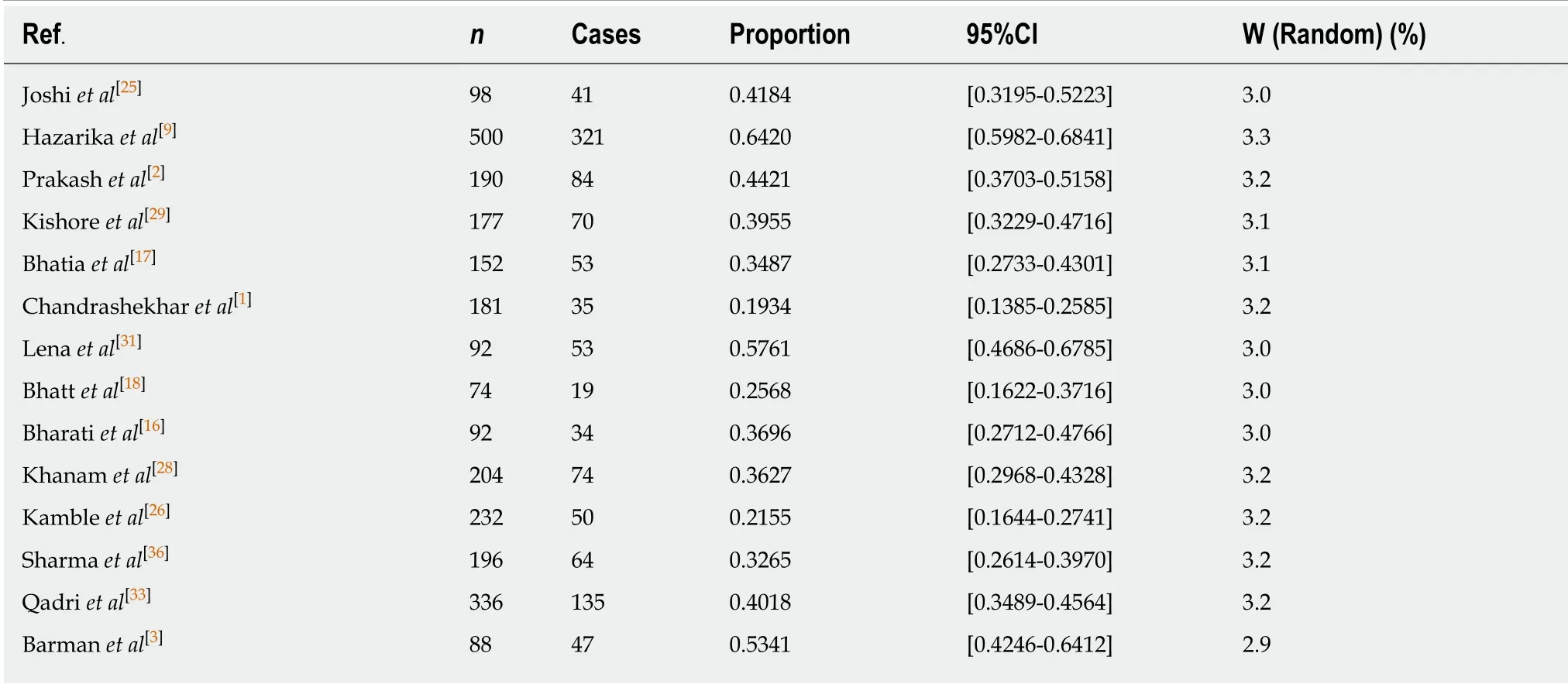
Table 2 Prevalence of cardiovascular diseases in the male Indian geriatric population

Banjare et al[13] 153 40 0.2614 [0.1938-0.3385] 3.2 Noor et al[32] 132 62 0.4697 [0.3823-0.5585] 3.1 Ghosh et al[20] 196 96 0.4898 [0.4179-0.5620] 3.2 Kumar et al[30] 190 66 0.3474 [0.2799-0.4197] 3.2 Bardhan et al[10] 293 30 0.1024 [0.0702-0.1429] 3.3 Dutta et al[19] 162 57 0.3519 [0.2786-0.4307] 3.1 Banjare et al[14] 153 40 0.2614 [0.1938-0.3385] 3.2 Shubha et al[11] 42 15 0.3571 [0.2155-0.5197] 2.6 Alam et al[12] 267 113 0.4232 [0.3632-0.4849] 3.2 Gupta et al[21] 244 94 0.3852 [0.3239-0.4495] 3.2 Bartwal et al[15] 187 77 0.4118 [0.3405-0.4859] 3.2 Naushad et al[8] 241 113 0.4689 [0.4045-0.5340] 3.2 Jain et al[24] 262 133 0.5076 [0.4454-0.5697] 3.2 Venkateshkrishna et al[37] 530 145 0.2736 [0.2360-0.3137] 3.3 Sahu et al[35] 61 15 0.2459 [0.1446-0.3729] 2.9 Jacob et al[23] 135 77 0.5704 [0.4824-0.6552] 3.1 Reddy et al[34] 594 191 0.3215 [0.2841-0.3608] 3.3 Gupta et al[22] 132 59 0.4470 [0.3604-0.5359] 3.1

Table 3 Tests of heterogeneity among studies of the male Indian geriatric population
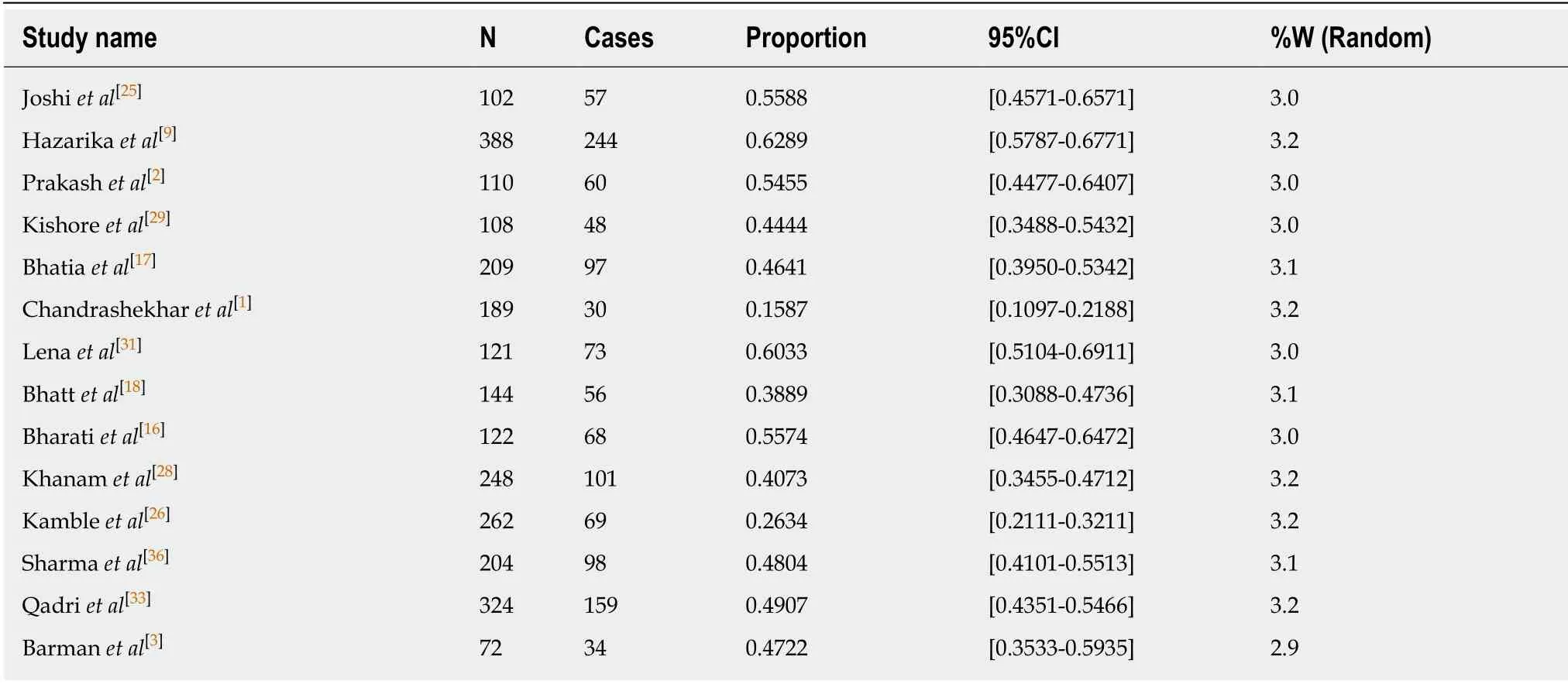
Table 4 Prevalence of cardiovascular diseases in the female Indian geriatric population
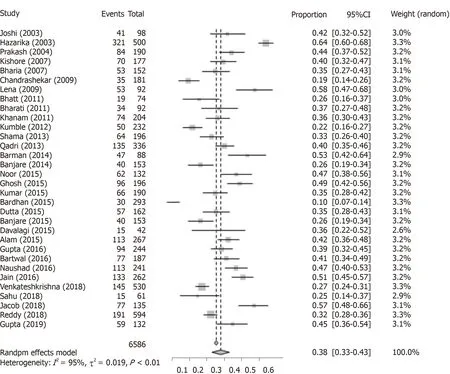
Figure 2 Forest plot of the meta-analysis of cardiovascular disease prevalence in the male Indian geriatric population.

Figure 3 Funnel plot showing publication bias in the meta-analysis of the prevalence of cardiovascular diseases in the male Indian geriatric population.
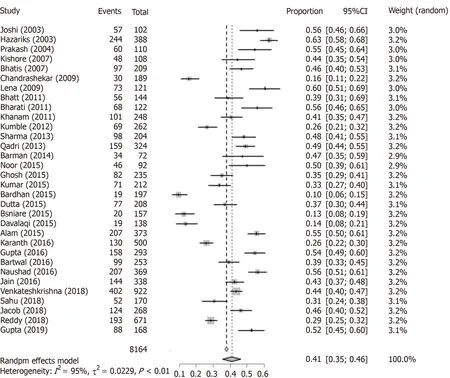
Figure 4 Forest plot of the meta-analysis of cardiovascular disease prevalence in the female Indian geriatric population.
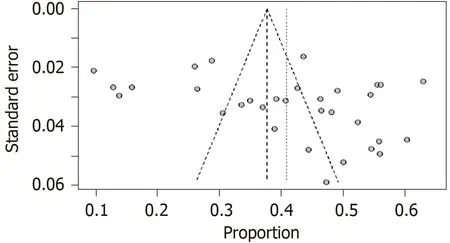
Figure 5 Funnel plot showing publication bias in the meta-analysis of prevalence of cardiovascular diseases in the female Indian geriatric population.
ARTICLE HIGHLIGHTS
Research background
India is in the phase of demographic transition.From the 2011 census,there are 104 million elderly persons in India as compared with 57 million elderly persons in 1991.The elderly are exposed to several morbidities such as cardiovascular diseases(CVDs),diabetes,hypertension,etc.CVDs have become the leading cause of mortality in India.An estimated 17.7 million people in India will die from CVDs representing 31% of all global deaths.Therefore,a precise estimate of the prevalence of CVDs in elderly males and females in India is required to assess the magnitude of the problem which needs to be addressed.
Research motivation
Very few studies are available on the prevalence of CVDs in India.The gender pooled estimate of CVDs from various studies conducted in different regions of the country can aid the development of preventive strategies.The difference in the prevalence of CVDs among male and female geriatric subjects was studied to provide an insight into the type of preventive and promotional services required.
Research objectives
The main objective of the study was to provide the gender pooled estimate of the prevalence of CVDs in the geriatric population of India.The large increase in the prevalence of CVDs in the Indian geriatric population has prompted health managers to take immediate steps for the prevention and early detection of these diseases.In addition,researchers are attempting to identify the location- and age-specific pooled estimate of the prevalence of CVDs.The main application of this meta-analysis is to consolidate the available data to determine the burden of CVDs in India.
Research methods
Secondary data related to the prevalence of CVDs in the geriatric population were collected from published research papers and then analyzed using meta-analysis in R software.A meta-analysis integrates the quantitative findings from separate studies and provides a numerical estimate of the overall effect of interest.
Research results
The overall prevalence of CVDs in the Indian geriatric population was estimated to be 36.6%(95%CI:31.9%-41.3%).The prevalence of CVDs in the male geriatric population was 38.0%,whereas the prevalence of CVDs in the elderly female population was 40.9%.
Research conclusions
The pooled prevalence of CVDs in the female Indian geriatric population was greater than the pooled prevalence of CVDs in the male Indian population.These findings will help policy makers to take immediate steps to provide geriatric health care services in India.It is possible that an insight into the magnitude of the problem of CVDs can help to shape preventive programs for CVDs.
Research perspective
Future studies should be conducted to determine the pooled estimate of CVDs in the geriatric population in both rural and urban areas,and in different age-groups.Subgroup analysis in meta-regression can be used to calculate these values.
 World Journal of Meta-Analysis2020年1期
World Journal of Meta-Analysis2020年1期
- World Journal of Meta-Analysis的其它文章
- Is there still a role for sucralfate in the treatment of gastritis?
- Long-term efficacy of capecitabine plus oxaliplatin chemotherapy on stage III colon cancer:A meta-analysis
- L-carnitine supplementation in non-alcoholic fatty liver disease:A systematic review and meta-analysis
